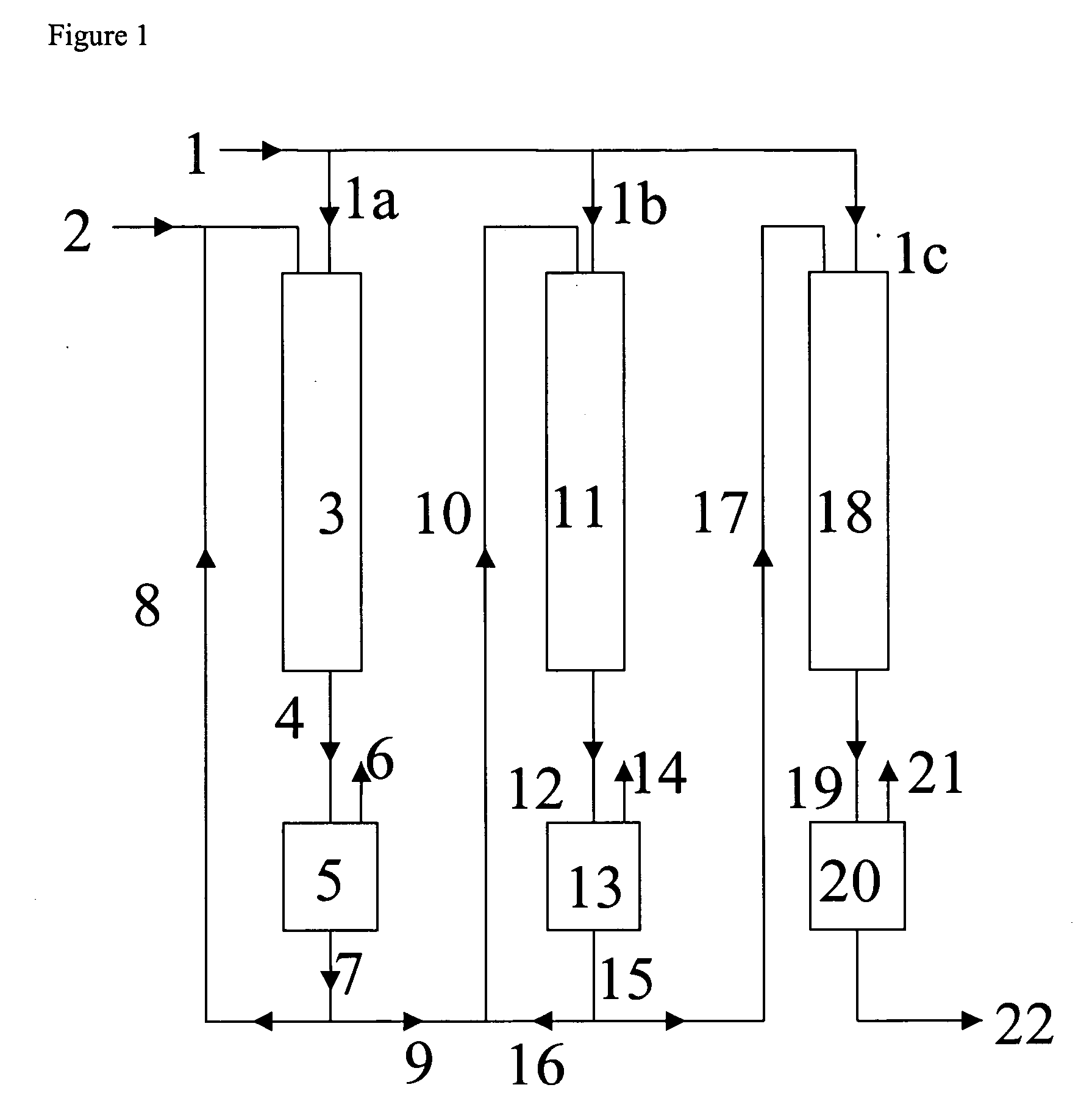Method for continuous catalytic hydrogenation
a catalytic hydrogenation and hydrogenation method technology, applied in the preparation of carboxylic acid esters, chemistry apparatus and processes, organic chemistry, etc., can solve the problems of large catalyst requirements, insufficient space-time yield and/or selectivity of technically known methods, and limited use of plastics
- Summary
- Abstract
- Description
- Claims
- Application Information
AI Technical Summary
Benefits of technology
Problems solved by technology
Method used
Image
Examples
example 1
According to the Invention
[0106] The hydrogenation is carried out in three stages. In the first two stages, the reactor is operated in loop operating mode, and in the third stage in straight through-flow passage.
[0107] The operating parameters and the mass flow rates of Example 1 are compiled in Table 1.
TABLE 11st stage2nd stage3rd stageTemperature (° C.)100100100Pressure (MPa)101010Offgas (l(S.T.P.) / h)505050Circulation rate (l / h)30300Feed (l / h)9.543.181.05DINP concentration in the10059.719.9feed (%) (based on fresh DINP orhydrogenation output of theprevious reactor)Hydrogenation output (l / h)*9.5923.1971.053DINP concentration in the59.719.9hydrogenation output (%)LHSV (h−1)**7.062.350.78
*Volume of the hydrogenation output, calculated assuming a density of 0.975 g / l and ignoring the offgas losses
**LHSV: liters of fresh DINP or liters of hydrogenation output from the previous reactor per liter of catalyst per hour.
[0108] The target product (hydrogenation output of the third stag...
example 2
Comparison
[0118] The hydrogenation is carried out in three stages. In the first two stages, the reactor is operated in loop operating mode, and in the third stage in straight through-flow passage.
[0119] The operating parameters and the mass flow rates of Example 2 are compiled in Table 2.
TABLE 21st stage2nd stage3rd stageTemperature (° C.)100100100Pressure (MPa)101010Offgas (l(S.T.P.) / h)505050Circulation rate (l / h)30300Feed (l / h)9.541.281.20DINP concentration in the10059.710.1feed (%) (based on fresh DINP orhydrogenation output of theprevious reactor)Hydrogenation output (l / h)*9.5921.291.20DINP concentration in the59.710.1hydrogenation output (%)LHSV (h−1)**7.060.950.88
*Volume of the hydrogenation output, calculated assuming a density of 0.975 g / l and ignoring the offgas losses.
**LHSV: liters of fresh DINP or liters of hydrogenation output from the previous reactor per liter of catalyst per hour.
[0120] The target product (hydrogenation output of the third stage) has a purity o...
PUM
| Property | Measurement | Unit |
|---|---|---|
| pressure | aaaaa | aaaaa |
| pressure | aaaaa | aaaaa |
| temperatures | aaaaa | aaaaa |
Abstract
Description
Claims
Application Information
 Login to View More
Login to View More - R&D
- Intellectual Property
- Life Sciences
- Materials
- Tech Scout
- Unparalleled Data Quality
- Higher Quality Content
- 60% Fewer Hallucinations
Browse by: Latest US Patents, China's latest patents, Technical Efficacy Thesaurus, Application Domain, Technology Topic, Popular Technical Reports.
© 2025 PatSnap. All rights reserved.Legal|Privacy policy|Modern Slavery Act Transparency Statement|Sitemap|About US| Contact US: help@patsnap.com

